Close to the eastern Slovakian town of Sekovce is a mall settlement of Roma families, called Habesch. This settlement was started with two blocks built for a couple of families; but by the years more and more families arrived and settled in small huts and houses built with available material. Official sides drew few attention and support to this location.
Some years ago a German initiative called Kellerladen e.V. from Cologne started to provide support for improving the local living conditions. This initiative is bringing in urgently needed goods and also built a small centre. In this location children and women receive support and training, especially to provide a better starting position for the kids.
In November 2019 I got the first opportunity to accompany one of the regular transports of goods to the Habesch. This is a first set of photos telling the story about life conditions in this settlement. Other stories will follow.
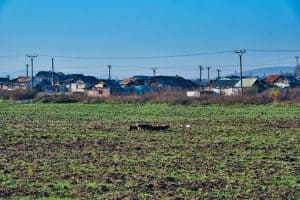
The Roma settlement Habesch is well separated from the town.
Nobody exactly knows how many people live in this settlement, is it 1500 or 3000? For sure more and more families arrive and build precarious houses. The settlement is clearly separated by cropland from the town. Nevertheless, some few families also settled in the town.
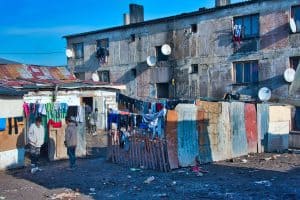
Older blocks are not enough, so precarious houses fill the space
In earlier times of this settlement two blocks were built for a number of families. But with arriving new families, lacking infrastructural planning, and lacking interest of official sides for integrating this settlement into the town, new housings are built wherever possible. The blocks are also looking run-down, but are some of the more solid living spaces.
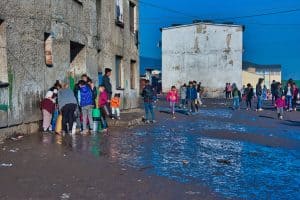
The only water caption is frecuented day and night
There is only one place in the whole settlement where the families can provide for drinking water. Women and kids line up with their buckets and tanks. This has to serve for drinking, cooking and washing. Its surely also the opportunity for a chat while waiting for the turn. Running the water day and night this place is busy all time, and also transforms the surface into a muddy field.
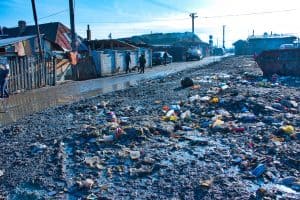
Precarious houses and huts along the main road
One main road is paved, the rest are muddy paths. Each family tries to establish its household with a minimum of privacy, according to availability of space. With arriving new families space is becoming scarce. The main square is not of their priorities. It is thus a garbage dump and more than often the playground for the kids.
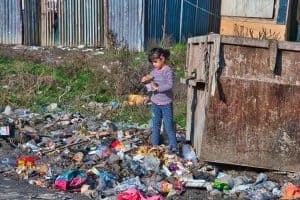
Kids are taking advantage of the garbage dump
Children take their surrounding as it is. This girl is happy with a used tin and a piece of thrown-away bread. If all people would have thrown their garbage into the container it wouldn’t find its toys. Who’s win is this?

If dirt or trash, anything around stimulates the creativity.
Modern, hygienic and pedagogically valuable toys are rare. So kids play with anything that offers space for their creativity. In this case it is a simple clump of clay dragged out of the soaked soil.